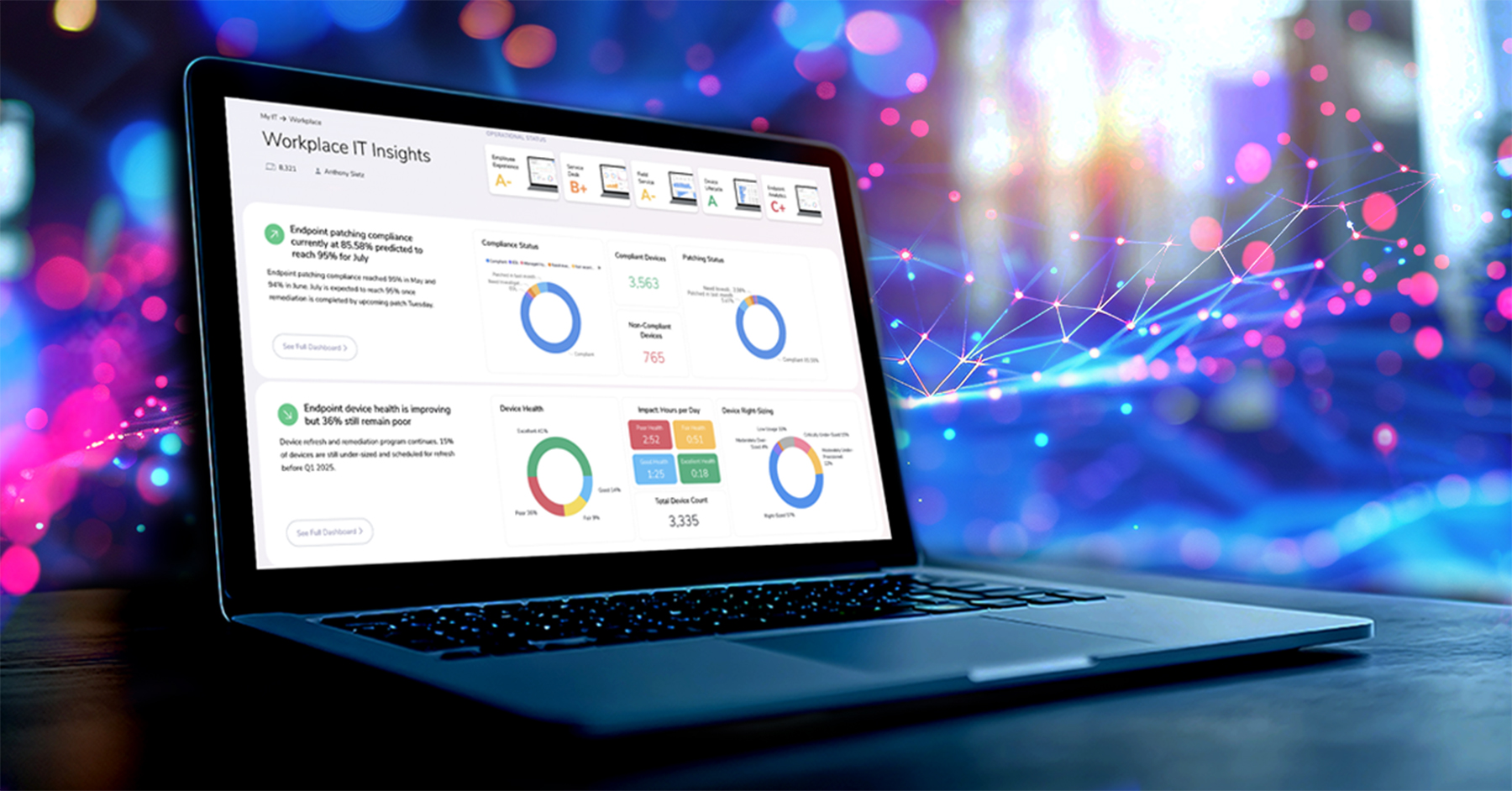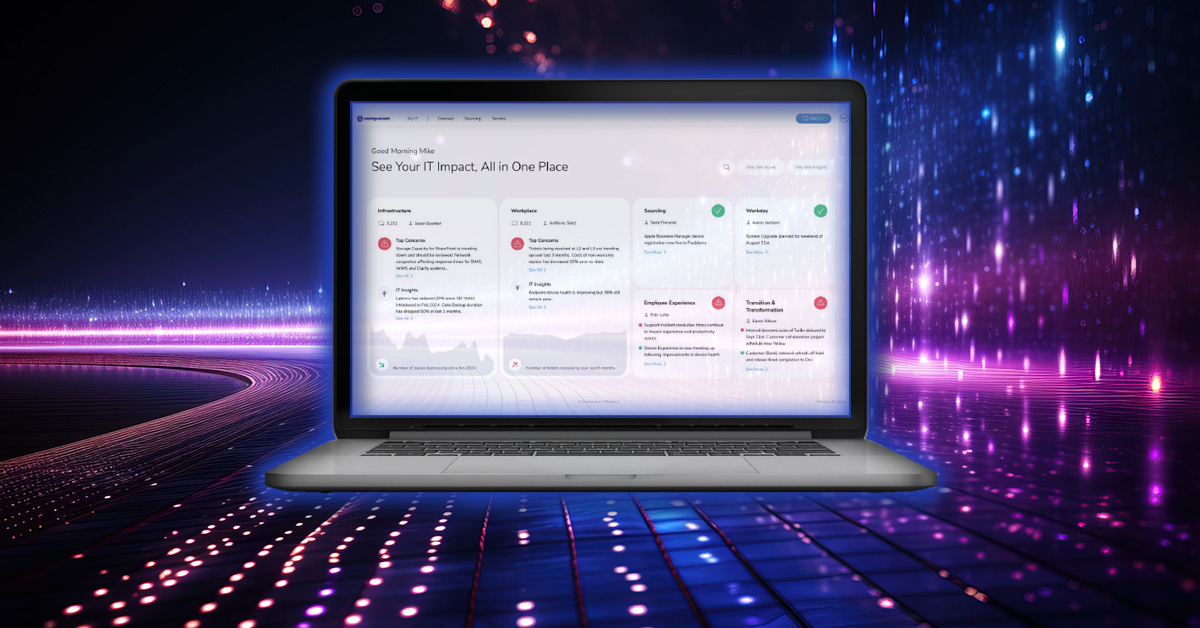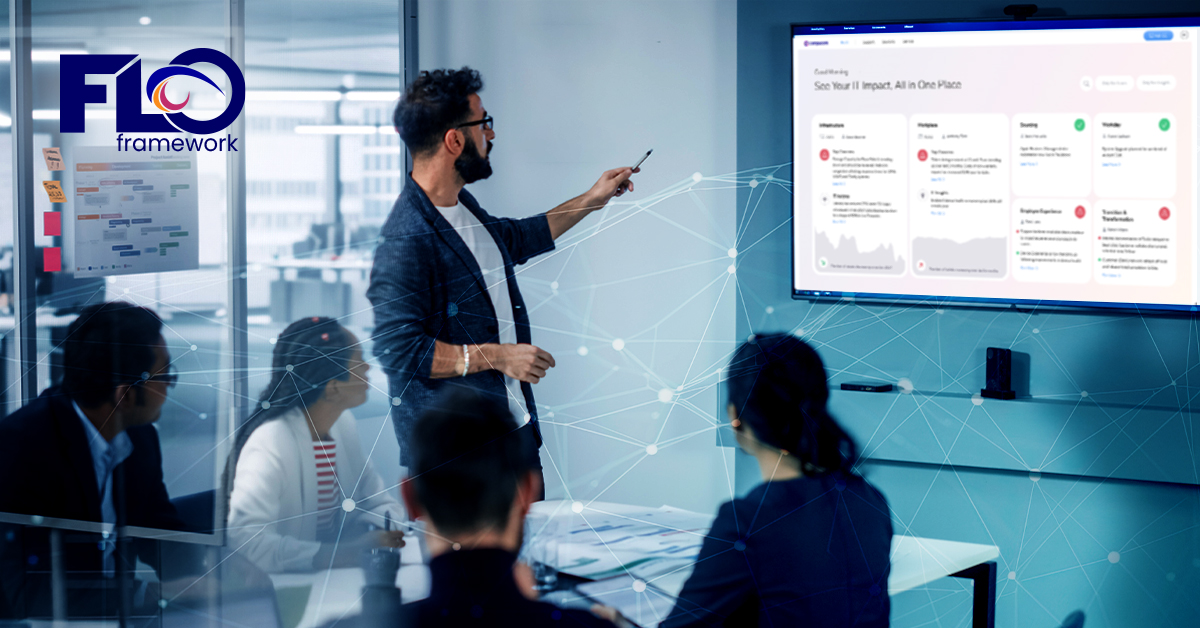- Managed Services and IT Support
- XLAs


Marketing Compucom
Moving beyond the SLA
The way we interact with tech can make or break a workplace experience. Just like consumer shopping, today we want instant gratification and personalized, automated experiences that make day-to-day life easier.
New hires need connected, secure, and ready-to-go devices on day one. Employees want seamless experiences that make things easy whether at home, in the office, or on the road. They also want to know that if something goes wrong, someone is already there to help.
In today’s market, anything less is unacceptable.
That’s why experience level agreements (XLAs) are the future of IT service.
More of a concept than a contract, XLAs bring people to the center of your IT strategy by measuring their perceived quality of technology experiences across your business.
What are XLAs? Do They Replace SLAs?
Service Level Agreements (SLAs) used to be the standard way to map out metrics for measuring the success of managed IT services. SLAs hold service providers accountable for the agreed-upon standard transactions of a contract—for example, ticket volume or average response time.
But SLAs don’t ask one important question: are people actually satisfied with the service?
By comparison, Experience Level Agreements (XLAs) measure indicators of the user experience—for example, ensuring that every new hire is equipped with the right devices, software, and access on day one.
This new approach to IT metrics rates success by how technology improves or impedes the overall employee experience. By focusing on employee satisfaction and customer experience, XLA metrics help organizations understand whether their managed IT services are delivering hassle-free experiences…or whether they’re falling short.
XLAs don’t replace traditional SLAs. You can (and should) use both.
SLAs have great value in measuring technical performance, and they’re familiar and comfortable to IT veterans, but efficiency doesn’t always equate to user experience. Calculating XLA performance is less a matter of aggregating metrics than of finding the metrics that count.
XLA vs SLA: Distinct Purposes, Valuable Insights
Measuring response time is important, but it won’t tell you what your employee’s experience was like before, during, and after the technician responded. In today’s workplace, measuring the impact on the employee is what matters most.
While tracking things like response times is valuable, companies hitting all their SLAs may still fall short in some crucial aspects of user experience. Meeting all SLAs may even mask an uncomfortable truth: measuring success based on ticket volume could be misleading—if a help service desk is useless, employees will not bother raising tickets.
“By focusing on employee satisfaction and customer experience, [XLAs] help organizations understand whether their managed IT services are delivering…or falling short.“
With an XLA, you measure quality, not quantity
For example, when employees need to bring up a client’s record quickly, an XLA would track how long it takes to search for a customer’s account, which shouldn’t exceed an agreed limit, say 8.5 seconds.
It would also go beyond to track other relevant aspects: is the experience reliable? Is it easy to complete? Is it meeting users’ expectations? Is the overall experience good or bad?
XLAs aren’t cookie-cutter, either. They should be tailored to an organization’s needs and IT concerns, as well as the outcomes they want to see. Measurements and targets can change over time, leading to continuous improvement.
While XLAs are still a breakthrough option, analysts predict more enterprises and industries will adopt this innovation in the near future.
Why Should Employers Care About XLAs?
XLAs help organizations focus on two crucial aspects of profitability: employee happiness and productivity.
The research on this topic is clear. Engaged employees are consistently more productive, more focused, and more likely to stay with your company.
In a recent IDC survey, 85% of surveyed executives also said that engaged employees make for better customer experiences…and higher revenues.
This is forcing companies to create a more human-centric approach to everything—from systems and processes to the entire technology experience.
Imagine a talented, driven professional who has just landed her dream job. The company’s mission aligns with her own, and she faces her first day with an energizing sense of purpose.
But the headaches start with the onboarding process: she struggles to get her laptop and mobile device set up with needed applications. She is tech-savvy and jumps at opportunities to resolve her own IT issues, but the company’s self-help knowledge base is abysmal—outdated and clunky—and she ends up just searching for answers online. She reaches out to tech support, but it takes a while to get a response, and they don’t follow up to see if the issue is resolved.
Over the next few months, her daily frustration with her work experience grows. Regretfully, she realizes the friction of her bad user experience keeps her from the more creative and engaging parts of her job and erodes her work-life balance.
Disillusioned, she realizes it’s time to update her LinkedIn profile and move on. Another talented team member lost to preventable tech issues (and preventable turnover and replacement costs).
How could her company have fixed this? An XLA that ensures a high-quality employee experience not just once, but every step of the way.
Better Employee Experiences = Better Business Performance
The Great Resignation shows no signs of stopping, fueled in part because people want better.
Like our example, talented workers have options and are not willing to stay in a job if their needs go unmet. When XLAs are thoughtfully designed and implemented, they can help the IT department provide next-level service and unlock elevated employee performance across the entire organization.
According to McKinsey, there are nine elements to getting the employee experience right. Many of these involve employees’ experiences with IT services, including:
- Work organization: Do I have the resources I need to be successful in my role?
- Work control and flexibility: Do I complete my work efficiently, with flexibility and positive integration in my life?
- Technology: Does my company’s technology enable me to work efficiently and without friction?
Successful companies differentiate themselves in the market by understanding their customers’ needs and structuring solutions to meet those needs.
Leading companies apply that same approach to understand and improve their employees’ journey, too.
Curious about XLAs and how we approach experience management? Book a call with our experts to learn more.
RecenT

9 Ways Strategic IT Staffing Empowers Organizations

Case Studies: Asset Intelligence and Endpoint Compliance Made Easy

AI and the Enterprise: The Future of IT Management

Exploring the Opportunities and Obstacles of AI in the Enterprise

One Dashboard to Rule Them All: Strategic IT Excellence with Full Lifecycle Observability

Transforming IT Operations with Full Lifecycle Observability: How Compucom’s FLO Framework Redefines Data-Driven Efficiency
TOPICS
Experience Level Agreements (XLA) Explained
- Managed Services and IT Support
- XLAs

Marketing Compucom
Moving beyond the SLA
The way we interact with tech can make or break a workplace experience. Just like consumer shopping, today we want instant gratification and personalized, automated experiences that make day-to-day life easier.
New hires need connected, secure, and ready-to-go devices on day one. Employees want seamless experiences that make things easy whether at home, in the office, or on the road. They also want to know that if something goes wrong, someone is already there to help.
In today’s market, anything less is unacceptable.
That’s why experience level agreements (XLAs) are the future of IT service.
More of a concept than a contract, XLAs bring people to the center of your IT strategy by measuring their perceived quality of technology experiences across your business.
What are XLAs? Do They Replace SLAs?
Service Level Agreements (SLAs) used to be the standard way to map out metrics for measuring the success of managed IT services. SLAs hold service providers accountable for the agreed-upon standard transactions of a contract—for example, ticket volume or average response time.
But SLAs don’t ask one important question: are people actually satisfied with the service?
By comparison, Experience Level Agreements (XLAs) measure indicators of the user experience—for example, ensuring that every new hire is equipped with the right devices, software, and access on day one.
This new approach to IT metrics rates success by how technology improves or impedes the overall employee experience. By focusing on employee satisfaction and customer experience, XLA metrics help organizations understand whether their managed IT services are delivering hassle-free experiences…or whether they’re falling short.
XLAs don’t replace traditional SLAs. You can (and should) use both.
SLAs have great value in measuring technical performance, and they’re familiar and comfortable to IT veterans, but efficiency doesn’t always equate to user experience. Calculating XLA performance is less a matter of aggregating metrics than of finding the metrics that count.
XLA vs SLA: Distinct Purposes, Valuable Insights
Measuring response time is important, but it won’t tell you what your employee’s experience was like before, during, and after the technician responded. In today’s workplace, measuring the impact on the employee is what matters most.
While tracking things like response times is valuable, companies hitting all their SLAs may still fall short in some crucial aspects of user experience. Meeting all SLAs may even mask an uncomfortable truth: measuring success based on ticket volume could be misleading—if a help service desk is useless, employees will not bother raising tickets.
“By focusing on employee satisfaction and customer experience, [XLAs] help organizations understand whether their managed IT services are delivering…or falling short.“
With an XLA, you measure quality, not quantity
For example, when employees need to bring up a client’s record quickly, an XLA would track how long it takes to search for a customer’s account, which shouldn’t exceed an agreed limit, say 8.5 seconds.
It would also go beyond to track other relevant aspects: is the experience reliable? Is it easy to complete? Is it meeting users’ expectations? Is the overall experience good or bad?
XLAs aren’t cookie-cutter, either. They should be tailored to an organization’s needs and IT concerns, as well as the outcomes they want to see. Measurements and targets can change over time, leading to continuous improvement.
While XLAs are still a breakthrough option, analysts predict more enterprises and industries will adopt this innovation in the near future.
Why Should Employers Care About XLAs?
XLAs help organizations focus on two crucial aspects of profitability: employee happiness and productivity.
The research on this topic is clear. Engaged employees are consistently more productive, more focused, and more likely to stay with your company.
In a recent IDC survey, 85% of surveyed executives also said that engaged employees make for better customer experiences…and higher revenues.
This is forcing companies to create a more human-centric approach to everything—from systems and processes to the entire technology experience.
Imagine a talented, driven professional who has just landed her dream job. The company’s mission aligns with her own, and she faces her first day with an energizing sense of purpose.
But the headaches start with the onboarding process: she struggles to get her laptop and mobile device set up with needed applications. She is tech-savvy and jumps at opportunities to resolve her own IT issues, but the company’s self-help knowledge base is abysmal—outdated and clunky—and she ends up just searching for answers online. She reaches out to tech support, but it takes a while to get a response, and they don’t follow up to see if the issue is resolved.
Over the next few months, her daily frustration with her work experience grows. Regretfully, she realizes the friction of her bad user experience keeps her from the more creative and engaging parts of her job and erodes her work-life balance.
Disillusioned, she realizes it’s time to update her LinkedIn profile and move on. Another talented team member lost to preventable tech issues (and preventable turnover and replacement costs).
How could her company have fixed this? An XLA that ensures a high-quality employee experience not just once, but every step of the way.
Better Employee Experiences = Better Business Performance
The Great Resignation shows no signs of stopping, fueled in part because people want better.
Like our example, talented workers have options and are not willing to stay in a job if their needs go unmet. When XLAs are thoughtfully designed and implemented, they can help the IT department provide next-level service and unlock elevated employee performance across the entire organization.
According to McKinsey, there are nine elements to getting the employee experience right. Many of these involve employees’ experiences with IT services, including:
- Work organization: Do I have the resources I need to be successful in my role?
- Work control and flexibility: Do I complete my work efficiently, with flexibility and positive integration in my life?
- Technology: Does my company’s technology enable me to work efficiently and without friction?
Successful companies differentiate themselves in the market by understanding their customers’ needs and structuring solutions to meet those needs.
Leading companies apply that same approach to understand and improve their employees’ journey, too.
Curious about XLAs and how we approach experience management? Book a call with our experts to learn more.
Recent Blogs

9 Ways Strategic IT Staffing Empowers Organizations

Case Studies: Asset Intelligence and Endpoint Compliance Made Easy

AI and the Enterprise: The Future of IT Management

Exploring the Opportunities and Obstacles of AI in the Enterprise

One Dashboard to Rule Them All: Strategic IT Excellence with Full Lifecycle Observability




